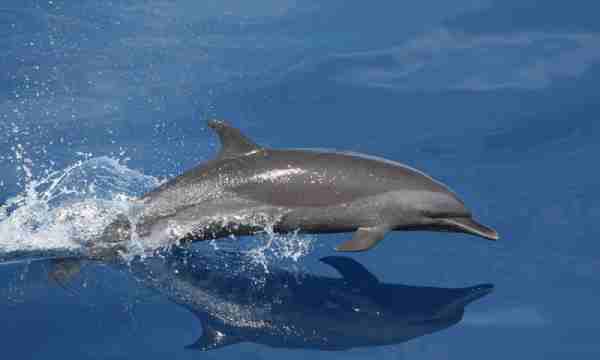The Caribbean Sea, renowned for its stunning turquoise waters and idyllic beaches, harbors a rich and diverse ecosystem teeming with a vast array of marine life. From vibrant coral reefs to elusive deep-sea creatures, the Caribbean’s underwater realm is a captivating tapestry of biodiversity.
This article delves into the enchanting world of animals in the Caribbean Sea, shedding light on the various species that call this region home and their unique adaptations to its distinct habitats. With its extensive coral formations, seagrass meadows, and underwater caves, the Caribbean Sea provides a mosaic of niches for countless species, including colorful reef fish, graceful sea turtles, enigmatic sharks, and playful dolphins.
Table of Contents
We’ll delve into the ecological significance of these creatures, their interconnected roles in sustaining the delicate balance of the oceanic ecosystem, and the efforts being made to conserve and protect their habitat in the face of various challenges. Join us in uncovering the beauty and importance of the Caribbean’s marine fauna and the need for their preservation.
Introduction to Caribbean Marine Life
The Caribbean Sea, an expanse of turquoise wonder, hides beneath its shimmering surface an ecosystem that beckons with an enchanting diversity of marine life. From the sunlit shallows to the mysterious depths, this region boasts a kaleidoscope of creatures that have evolved over eons to thrive in its unique environment.
The vibrant coral reefs, seagrass meadows, and azure waters are a testament to the intricate interplay between species and their surroundings. The lure of the Caribbean’s marine life is not only its breathtaking beauty but also its role in maintaining the delicate balance of the Earth’s oceans.
Overview of the Caribbean Sea and its Significance
Stretching like a jewel-studded ribbon between North and South America, the Caribbean Sea stands as an embodiment of natural wonder and ecological importance. Beyond its postcard-perfect beaches lies a realm of significance that extends beyond its undeniable beauty.
Serving as a bridge between two continents, the Caribbean Sea plays a vital role in the migration patterns of numerous marine species, connecting ecosystems in intricate ways. Its warm waters and intricate geography have nurtured thriving coral reefs that house a symphony of life, while also acting as a buffer against the ravages of storms for coastal communities.
Diversity of Marine Ecosystems within the Caribbean Region
The Caribbean Sea is a testament to the Earth’s astonishing capacity for ecological diversity. Within its embrace, a tapestry of marine ecosystems unfolds, each with its own unique inhabitants and intricacies.
From the shallow coastal zones to the deep abyssal plains, this region offers an array of habitats that have given rise to an astounding variety of marine life. Coral reefs, often referred to as the rainforests of the sea, grace the shallows with their brilliant colors and intricate structures, providing sanctuary for countless species of fish, mollusks, and invertebrates.
Seagrass meadows sway gently beneath the waves, offering a vital breeding ground for numerous marine creatures. And as the ocean’s depth increases, underwater mountains and trenches create homes for elusive and fascinating deep-sea organisms. This section explores the remarkable diversity of marine ecosystems within the Caribbean, highlighting the incredible adaptations and coexistence of life forms across its various habitats.
Parrotfish
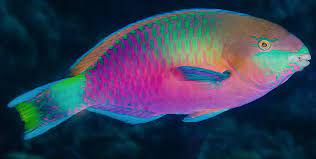
Parrotfish, with their vibrant colors and distinctive beak-like mouths, are some of the most charismatic inhabitants of Caribbean coral reefs. These herbivores play a crucial role in maintaining reef health by grazing on algae that would otherwise overtake the corals. As they nibble on the reef’s surface, their grazing helps prevent algal overgrowth and encourages coral growth, making them essential for the reef’s overall balance.
Angelfish

Graceful and captivating, angelfish are a common sight in Caribbean waters. Their striking patterns and vibrant hues add a splash of color to coral reefs. These omnivorous fish contribute to reef ecosystems by feeding on algae and small invertebrates. Their presence serves as a natural regulator of algae growth, ensuring the health of the delicate coral structures.
Clownfish

Clownfish, famous for their symbiotic relationship with sea anemones, thrive in the warm waters of the Caribbean Sea. These small, vibrant fish find shelter within the tentacles of sea anemones, gaining protection from predators and a safe place to lay their eggs. In return, the clownfish provide food scraps and deter parasites, exemplifying a remarkable example of mutualism in marine ecosystems.
Surgeonfish

Easily recognizable by the sharp, scalpel-like spines near their tails, surgeonfish are herbivores that graze on algae, contributing to the balance of Caribbean reefs. Their vibrant colors and distinct body shape make them a fascinating presence, while their ecological role in controlling algal growth is vital to the health of coral communities.
Grouper

The Caribbean Sea is home to various species of grouper, which play a significant role in maintaining the food chain. As predatory fish, they help control the populations of smaller fish and maintain the overall balance of reef ecosystems. These social and intelligent creatures are a highlight of underwater encounters in the Caribbean.
Green Sea Turtle

The graceful movements of green sea turtles are a symbol of the Caribbean’s rich marine life. These ancient creatures, known for their vibrant greenish skin, are essential for maintaining the health of seagrass meadows and coral reefs. They graze on seagrasses, controlling their growth and providing habitats for numerous other species. However, these magnificent turtles face threats such as habitat loss and accidental capture, making conservation efforts crucial.
Hawksbill Sea Turtle

Hawksbill sea turtles, distinguished by their pointed beaks and intricately patterned shells, are another significant inhabitant of the Caribbean. They have a key role in shaping coral reef ecosystems by feeding on sponges, which prevents sponges from overpowering corals. Their stunning appearance and ecological importance make them a conservation focus in the region.
Leatherback Sea Turtle

The leatherback sea turtle, the largest of all sea turtle species, graces the Caribbean’s waters as well. With their unique leathery shell, these turtles are known for their deep dives in search of jellyfish, helping to control jellyfish populations. Their presence in the Caribbean underscores the area’s importance as a haven for these ancient and majestic creatures.
Dolphins and Porpoises
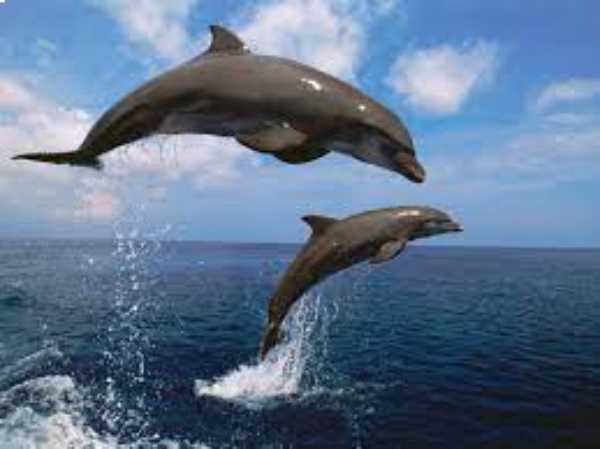
The Caribbean Sea is home to a variety of dolphins and porpoises, including bottlenose dolphins and spinner dolphins. These intelligent and social marine mammals captivate observers with their playful behaviors. Their presence highlights the rich biodiversity of the region’s waters and offers unique opportunities for marine enthusiasts to witness these charismatic creatures in their natural habitat.
Whales

The Caribbean’s warm waters serve as a migratory route for several whale species, including humpback whales. These gentle giants undertake long journeys to breed and give birth in these protected areas. The sight of a whale breaching the surface is a reminder of the grandeur and significance of the Caribbean’s marine environment.
Nurse Shark

Nurse sharks, with their docile nature and distinctive barbels, are a common sight in Caribbean reefs and coastal areas. Despite their name, these sharks are not a threat to humans. They contribute to the ecosystem by scavenging on the ocean floor, helping to maintain the health of the seabed.
Caribbean Reef Shark

Caribbean reef sharks are predators that inhabit the region’s coral reefs and deeper waters. As apex predators, they help control the populations of smaller fish, ensuring the overall balance of the ecosystem. Their presence contributes to the diversity and dynamics of the Caribbean’s underwater world.
Hammerhead Shark
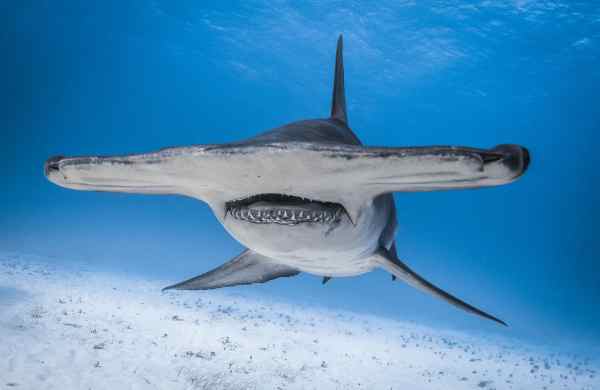
Hammerhead sharks, with their uniquely shaped heads, occasionally grace the Caribbean’s waters. Their distinctive silhouette makes them instantly recognizable. These sharks play a role in maintaining the health of the marine ecosystem by regulating the populations of various marine species.
Stingrays and Manta Rays
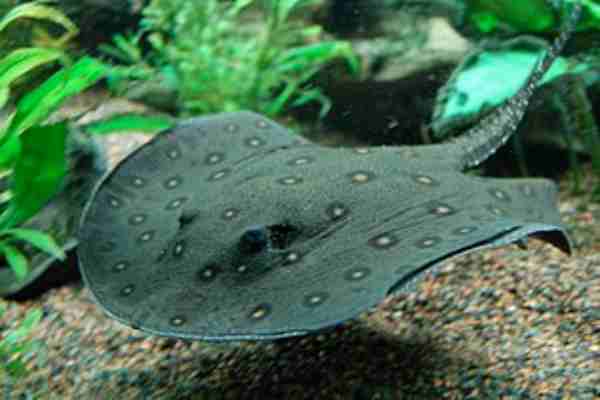
The Caribbean’s sandy bottoms and reef systems provide habitats for various species of rays. Stingrays, with their flattened bodies and venomous tail spines, glide gracefully along the seabed. Manta rays, larger and more elusive, are filter feeders that contribute to maintaining the ocean’s plankton populations.
Sea Anemones

Sea anemones, often found attached to coral reefs, are fascinating creatures that form symbiotic relationships with various species, such as clownfish. These underwater creatures provide shelter and protection for small fish and invertebrates, showcasing the interconnectedness of Caribbean marine life.
Sea Urchins
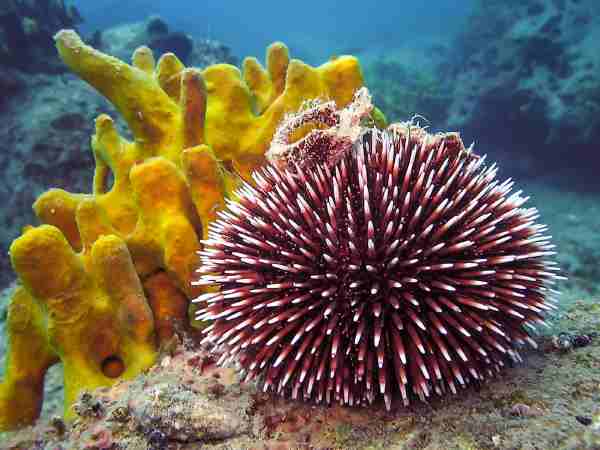
Sea urchins are essential members of Caribbean ecosystems, contributing to the health of coral reefs. They graze on algae and prevent it from overgrowing and smothering coral structures. Their role as herbivores helps maintain the delicate balance of the underwater environment.
Sea Cucumbers

Sea cucumbers, despite their unassuming appearance, serve a vital role in Caribbean waters. These bottom-dwelling creatures are detritivores, feeding on organic matter on the ocean floor. By doing so, they help recycle nutrients and maintain the cleanliness of the marine environment.
Lionfish Invasion: Impact on Caribbean Marine Ecosystems
Amidst the captivating beauty and biodiversity of the Caribbean Sea, a concerning issue has emerged: the lionfish invasion. Originally native to the Indo-Pacific region, lionfish were introduced to the Caribbean through the aquarium trade, and their presence has grown into an ecological challenge. Their stunning appearance, characterized by striking stripes and elaborate fins, hides a voracious appetite that threatens the delicate balance of the Caribbean’s marine ecosystems.
Lionfish, with no natural predators in the Caribbean, have multiplied rapidly and become invasive predators themselves. They feed on a variety of small fish and crustaceans, putting pressure on local species and disrupting the food chain. Their unchecked population growth jeopardizes the health of coral reefs and native fish populations, which play crucial roles in maintaining overall ecosystem stability.
Efforts to mitigate the lionfish invasion have included various strategies, from culling initiatives to encouraging lionfish as a culinary delicacy. Local communities, conservation organizations, and divers have united to address this growing concern, recognizing that immediate action is necessary to protect the region’s marine biodiversity.
The lionfish invasion serves as a poignant reminder of the interconnectedness of marine life and the far-reaching consequences of human activities. As the battle against this invasive species continues, it underscores the importance of responsible aquarium trade practices, heightened awareness, and collaborative conservation efforts to safeguard the Caribbean’s irreplaceable marine ecosystems for future generations.
Threats to Caribbean Marine Life: Navigating Challenges for Conservation
While the Caribbean Sea showcases a breathtaking mosaic of marine life, it faces an array of threats that jeopardize the fragile equilibrium of its ecosystems. Climate change stands as a significant menace, manifesting through rising sea temperatures and ocean acidification, which directly affect the health of coral reefs. These vital habitats provide shelter, food, and breeding grounds for numerous species, making their decline a substantial concern.
Human activities, including overfishing and destructive fishing practices, pose a dire threat to marine populations. Overfishing disrupts the balance of food chains and endangers fish stocks. Unsustainable fishing methods, such as blast fishing and cyanide poisoning, irreparably damage coral reefs and decimate marine species. Pollution, primarily from plastic waste and runoff-carrying pollutants, further degrades water quality and harms marine organisms.
Invasive species, like the lionfish mentioned earlier, disrupt native ecosystems by outcompeting local species and upset established relationships. Habitat destruction due to coastal development and irresponsible tourism exacerbates these challenges, eroding the vital connection between healthy ecosystems and local economies.
Efforts to mitigate these threats require collaborative action on multiple fronts. Conservation initiatives, marine protected areas, sustainable fishing practices, and public awareness campaigns are crucial to safeguarding the Caribbean’s marine life. The intricate balance of this underwater world underscores the urgency of addressing these threats, highlighting the interdependence between the health of the oceans and the well-being of the region’s inhabitants.
Conservation Efforts: Safeguarding the Future of Caribbean Marine Life
In the face of mounting challenges to the Caribbean’s marine ecosystems, dedicated conservation efforts are underway to protect and preserve the invaluable biodiversity of this remarkable region. Collaborative initiatives involving governments, local communities, scientists, and organizations are working tirelessly to ensure the sustainable management of the Caribbean’s marine resources.
Marine protected areas (MPAs) play a pivotal role in safeguarding sensitive habitats and vulnerable species. These designated zones allow ecosystems to recover, while also providing essential breeding and feeding grounds for marine life. Efforts to establish and expand MPAs, alongside the enforcement of fishing regulations, are crucial steps towards restoring ecosystem balance.
Education and awareness campaigns are pivotal in instilling a sense of responsibility and stewardship among residents and visitors alike. By fostering a deeper understanding of the intricate relationships within the marine environment, these initiatives inspire a collective commitment to conservation.
Scientific research is another cornerstone of conservation efforts. Ongoing studies monitor the health of coral reefs, track species populations, and assess the impact of human activities. These insights guide decision-making and help develop strategies to mitigate threats effectively.
Innovative approaches, such as sustainable tourism practices and the creation of artificial reefs, are also being explored. By channeling tourism revenue into conservation projects and providing alternative habitats for marine life, these strategies promote environmental integrity while supporting local economies.
The road to preserving the Caribbean’s marine life is undeniably challenging, but the dedication of individuals and organizations working towards this common goal is heartening. Through sustained collaboration, adaptive management, and global awareness, there is hope that the vibrant underwater tapestry of the Caribbean Sea can be conserved for generations to come.
Final Words
The Caribbean Sea’s mesmerizing depths hold more than just breathtaking beauty; they cradle an intricate web of life that teems with diversity and significance. From vibrant corals to majestic sea turtles, the marine life of this region captivates hearts and underscores the planet’s delicate interconnectedness. Yet, in the face of climate change, overexploitation, and invasive species, this underwater wonderland faces unprecedented challenges.
As we journey through the depths of conservation efforts, one truth becomes evident: the fate of Caribbean marine life rests in our hands. The collective commitment of governments, communities, scientists, and passionate individuals is essential to steer these ecosystems towards recovery. By embracing sustainable practices, fostering awareness, and advocating for stronger protection measures, we can safeguard the Caribbean’s marine legacy.
Reference:
- https://www.oecs.org/perb_docs/bc_part2a_openocean.pdf
- https://www.finestresorts.com/blog/what-kind-of-wildlife-can-you-encounter-in-the-caribbean/
- https://www.yachting.com/en-gb/news/what-inhabits-the-caribbean

